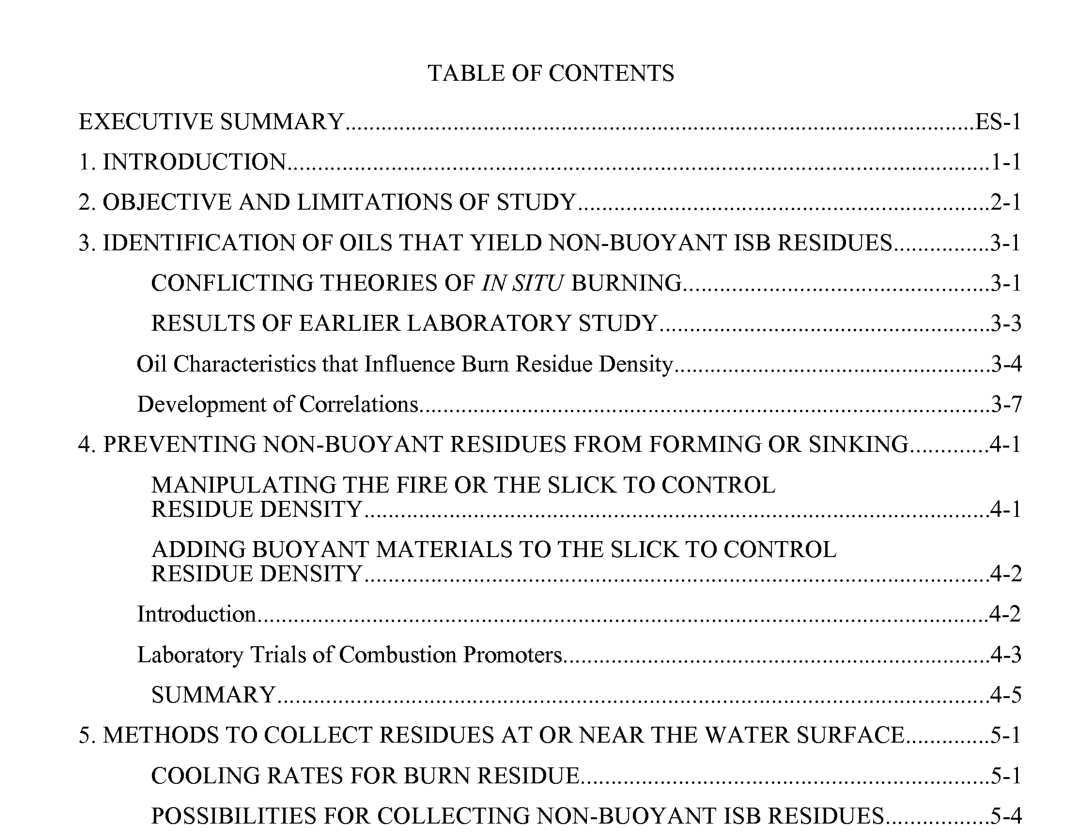API DR 145 pdf download

API DR 145 pdf download.Identification of Oils that Produce non-Buoyant In Situ Burning Residues and Methods for their Recovery
The three most important factors that determine whether an ISB residue will sink or not are the properties of the starting oil, its thickness and the efficiency of the bum process. Some oils that are already relatively heavy will certainly produce residues that will sink in seawater, but only if the bum process is efficient and uninterrupted. The purpose of this section of the report is to predict which oils will produce non-buoyant residues if the burn process is assumed to be “efficient.” Here “efficient” means as efficient as that experienced in controlled, small-scale burns. It is theoretically possible to control burn efficiencies operationally in the field and thereby control the density of the bum residue. These operational possibilities are dealt with in the next section. CONFLICTING THEORIES OF INSITU BURNING (The following is a summary of the discussion in S.L. Ross, 1995.) In situ buming of an oil slick on water proceeds because the hydrocarbon vapor above the liquid bums. The key process is radiative heat transfer from the flame back to the surface of the slick. Some of this heat transfers through the slick to the underlying water, but most vaporizes the liquid hydrocarbons, which rise to mix with air above the slick. Oxidation then occurs, releasing heat to continue the buming process. Once ignited, a buming thick oil slick reaches a quasi-steady-state in which the vaporization rate sustains the necessary heat transfer back to the slick surface.There is uncertainty about the process by which oil vaporizes during in situ buming. Three possibilities exist: (1) Batch Distillation, (2) Equilibrium Flash Vaporization (EFV), or (3) a combination of the two. In Batch Distillation the lightest, most volatile components are boiled off from the entire slick first, followed by progressively heavier, less volatile components. If this happened exclusively during in situ buming, the temperature of the oil slick would increase over the bum period, and the residue remaining after the burn would contain no lighter hydrocarbons and would be much heavier than the original oil.
In contrast, the theory of Equilibrium Flash Vaporization (EFV) indicates that, over the entire course of the burn period, vapor of essentially constant composition is produced by a feed of oil of essentially constant composition. Researchers believe that EFV is a key vapor-producing mechanism in ISB because of the following experimental observations: (1) the surface temperatures of burning oil slicks tend to remain relatively constant during steady-state buming; (2) a steep temperature profile exists in the buming slick, indicating a poorly-mixed oil layer, as required for EFV; and, (3) the presence of lighter ends in the oil residue remaining after a bum. It is believed that EFV occurs during in situ burning because the hot flames and the insulating characteristics of the oil combine to create high temperatures in a thin surface layer of the slick known as the “hot zone.” This promotes near-complete vaporization of the surface of the oil slick with minimal mixing and heat transfer to the underlying oil and/or water layers. Despite the above indications it is clear that the vaporization process that occurs during the in situ buming of crude oils is some combination of Batch Distillation and EFV. It is well known that the burn residue, while still containing some lighter ends, differs markedly from the original oil. The residue’s high density and viscosity strongly indicate that there is a progressive concentration of the very high molecular weight compounds in the remaining slick as in situ burning proceeds. It is likely this concentration of heavy compounds in the residue over time that determines whether a residue will sink or not. Residues from burns of thick crude oil slicks are more likely to sink than residues from bums of thin slicks of the same crude because of the extra concentrating potential in the thick-slick case.









